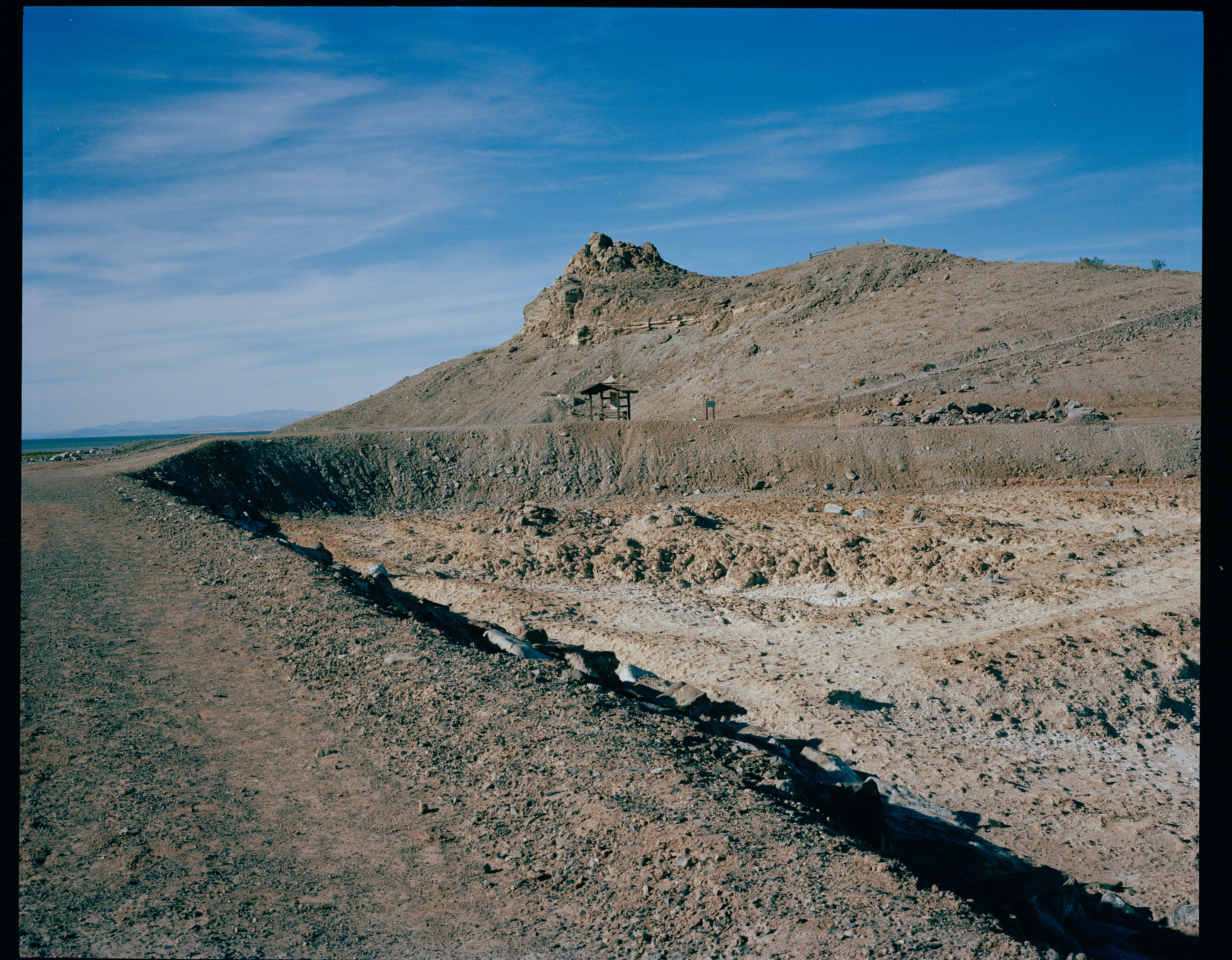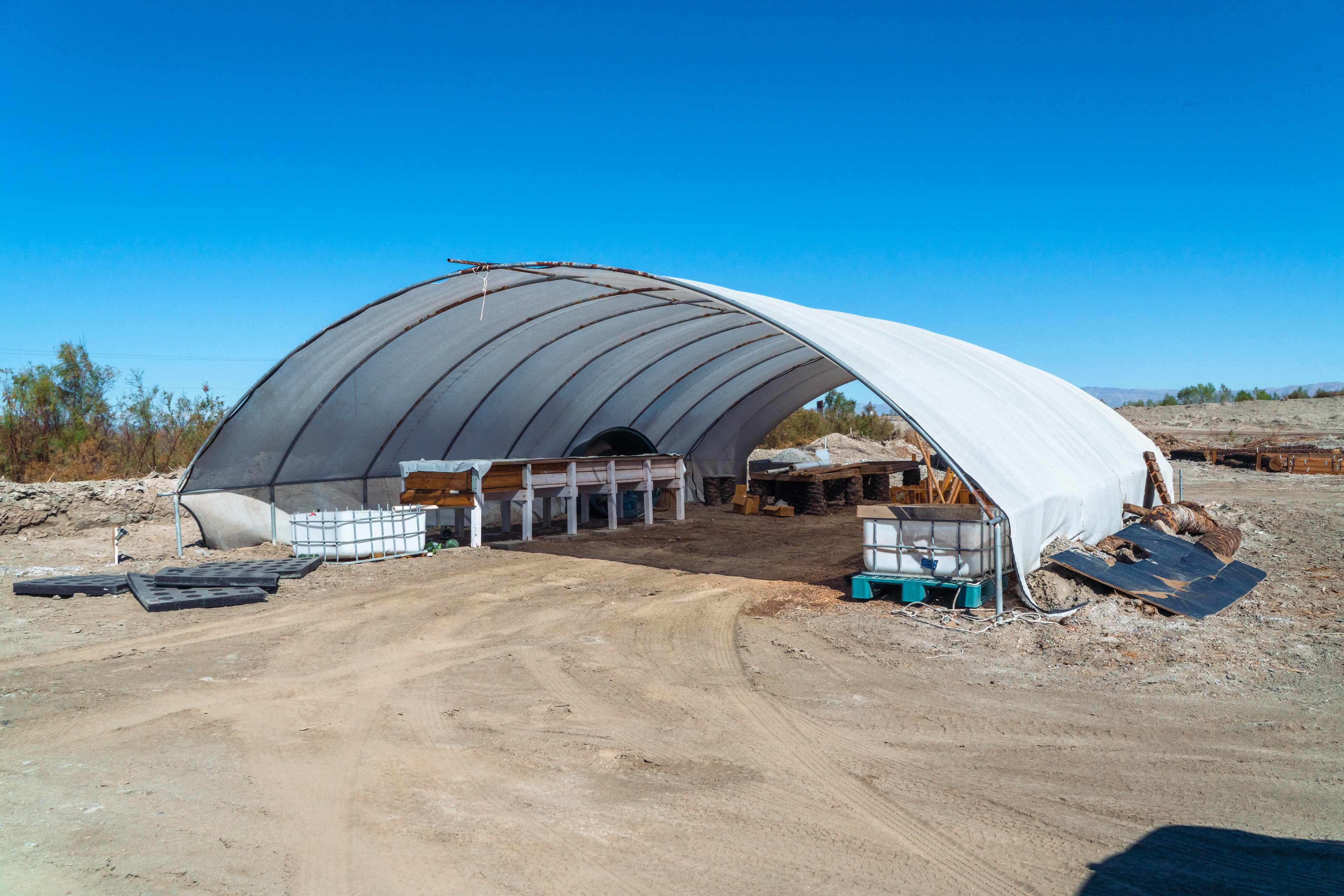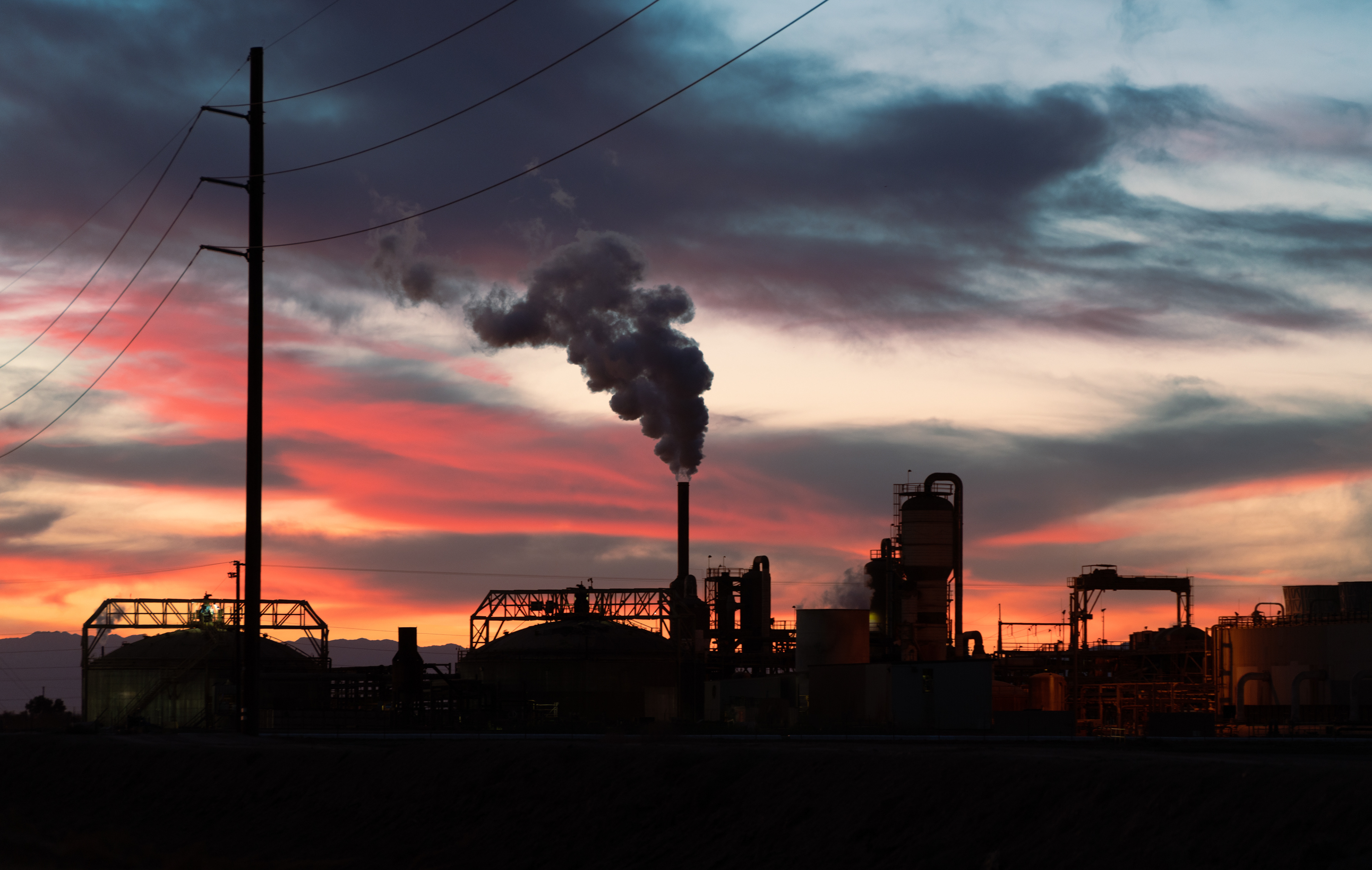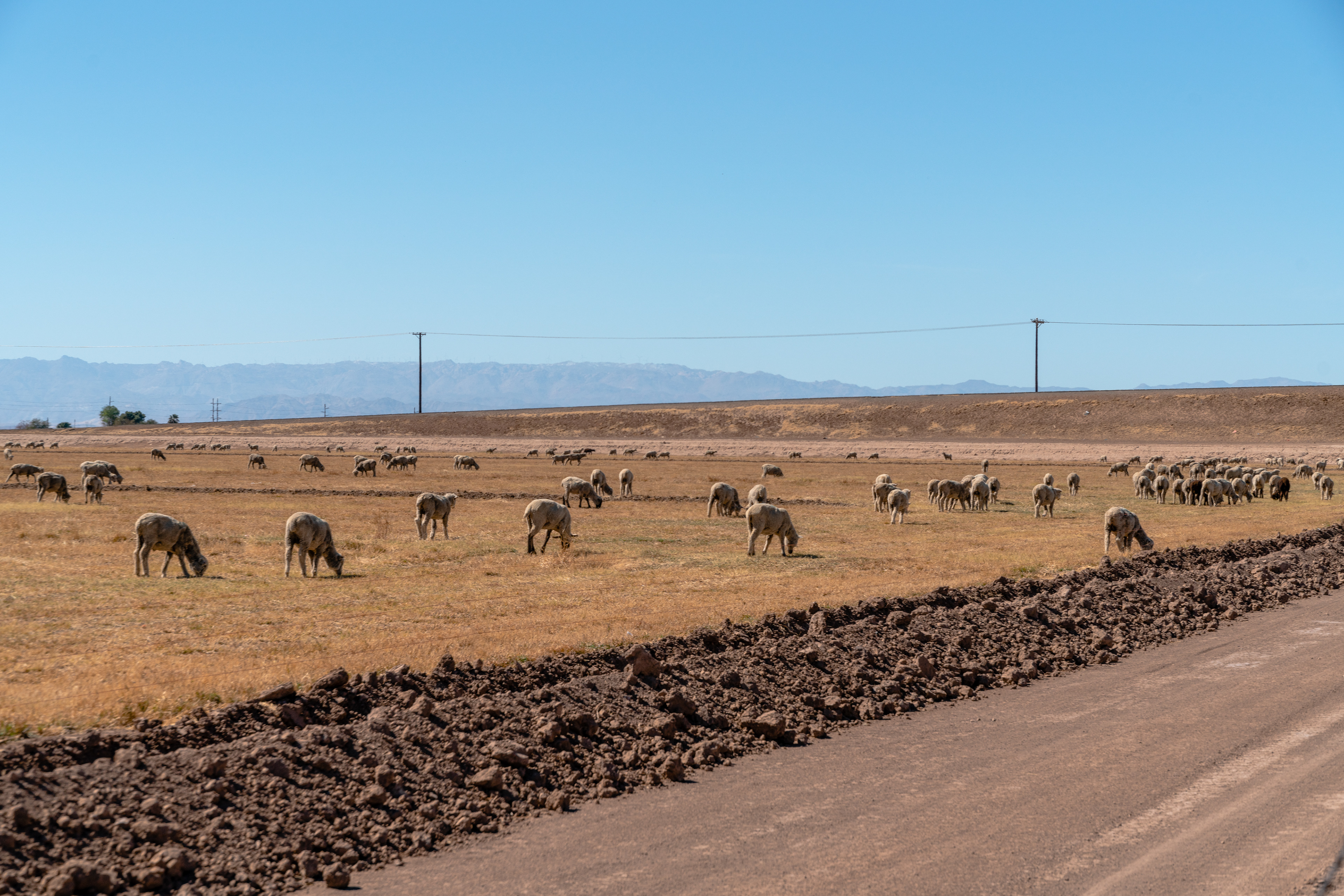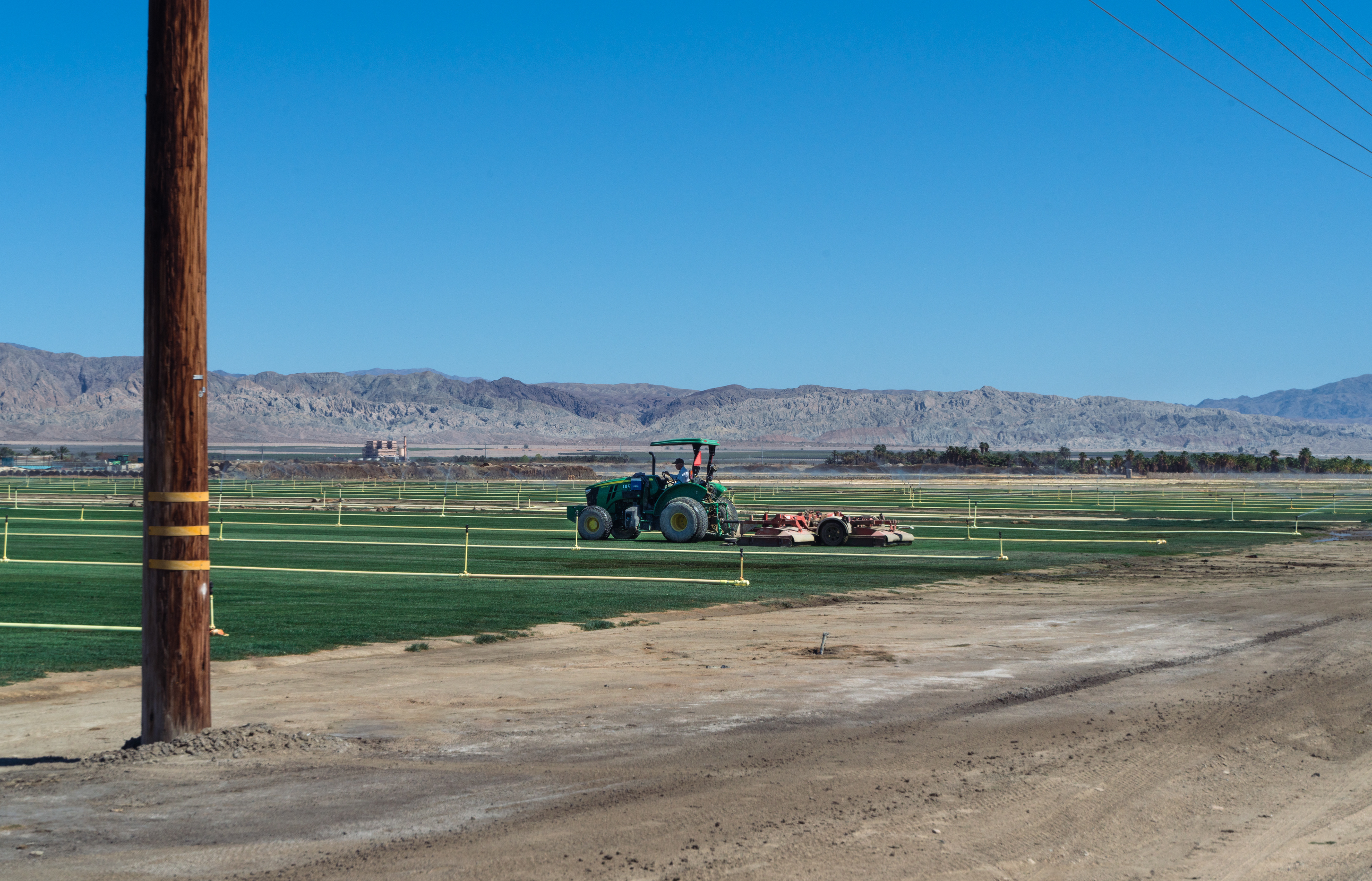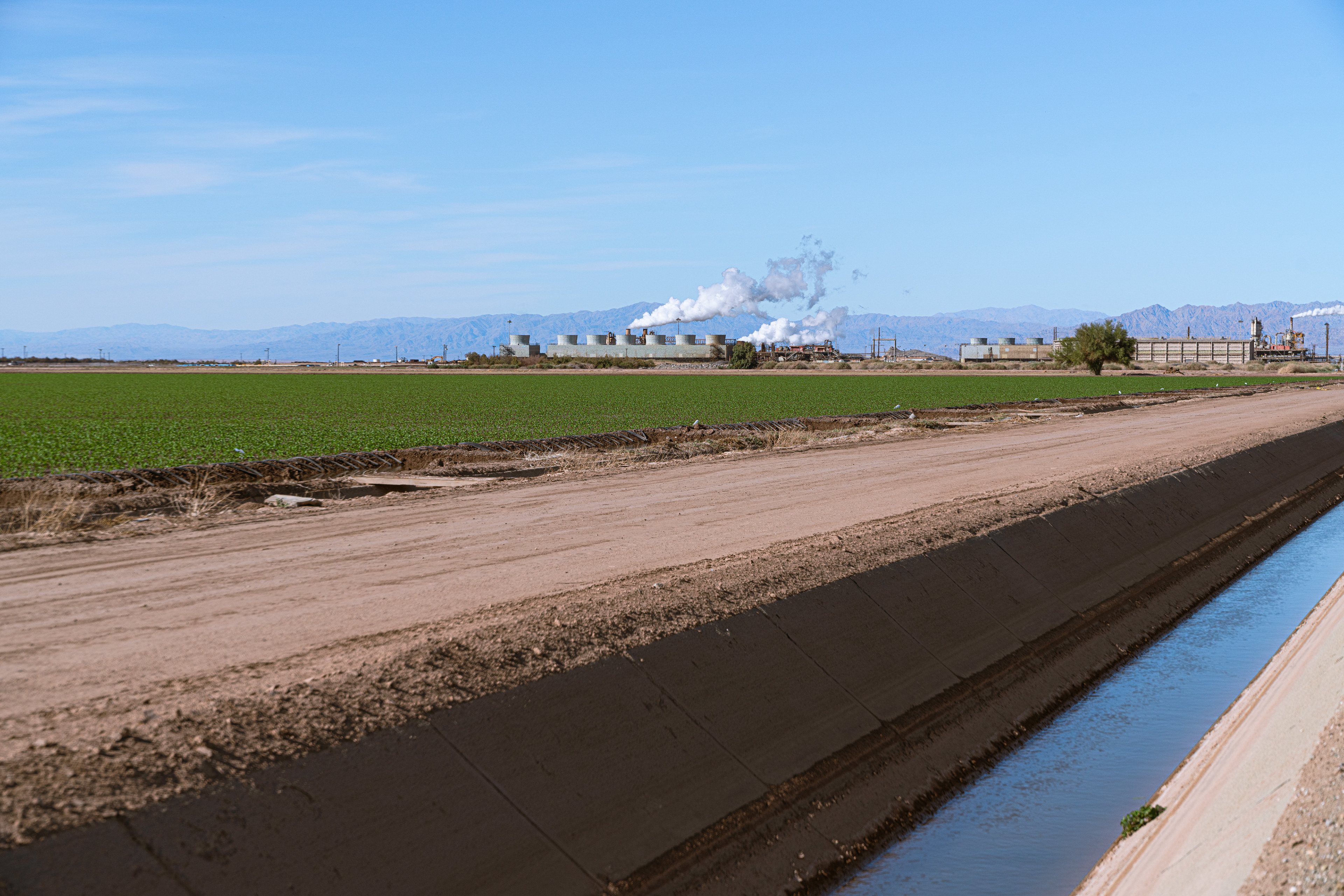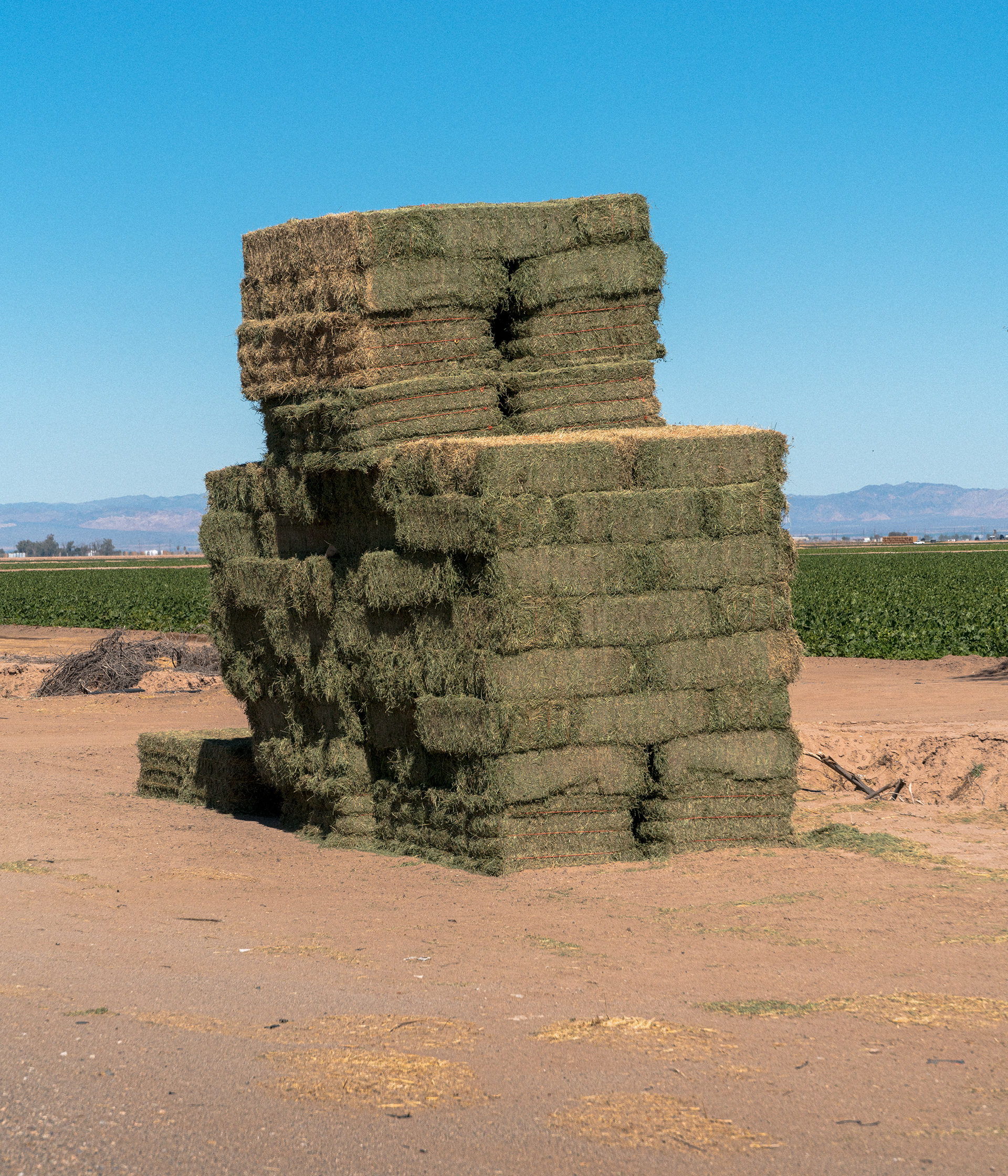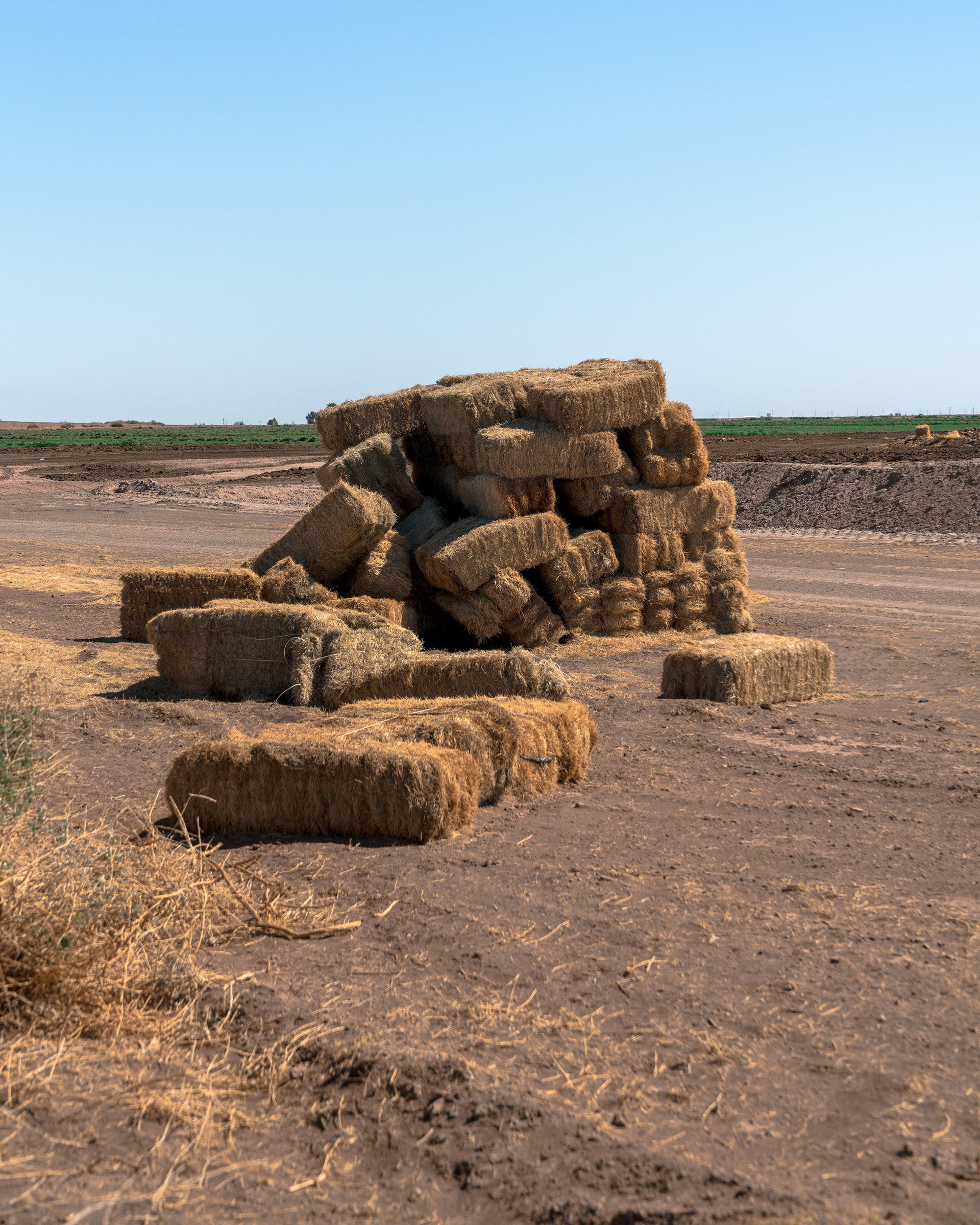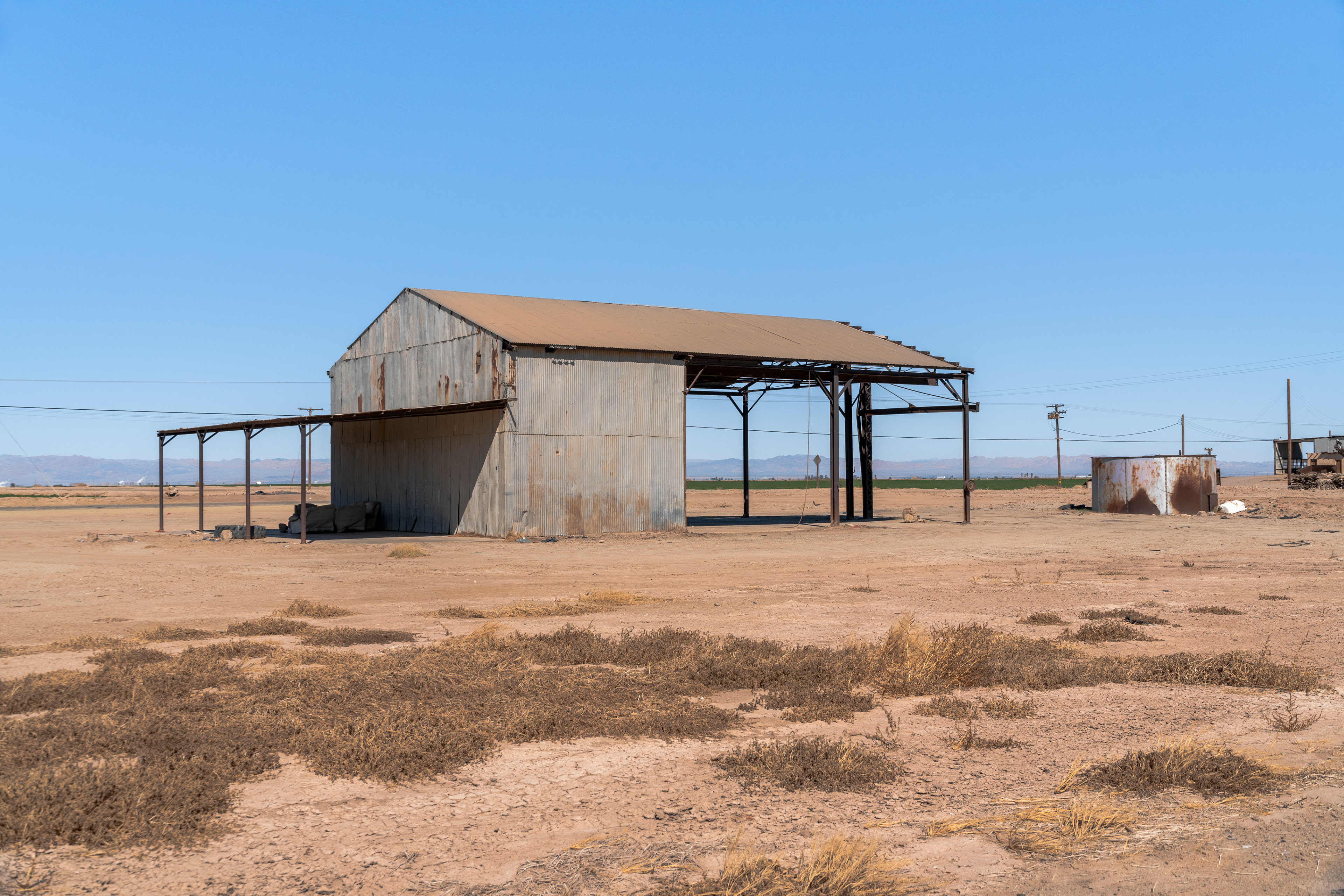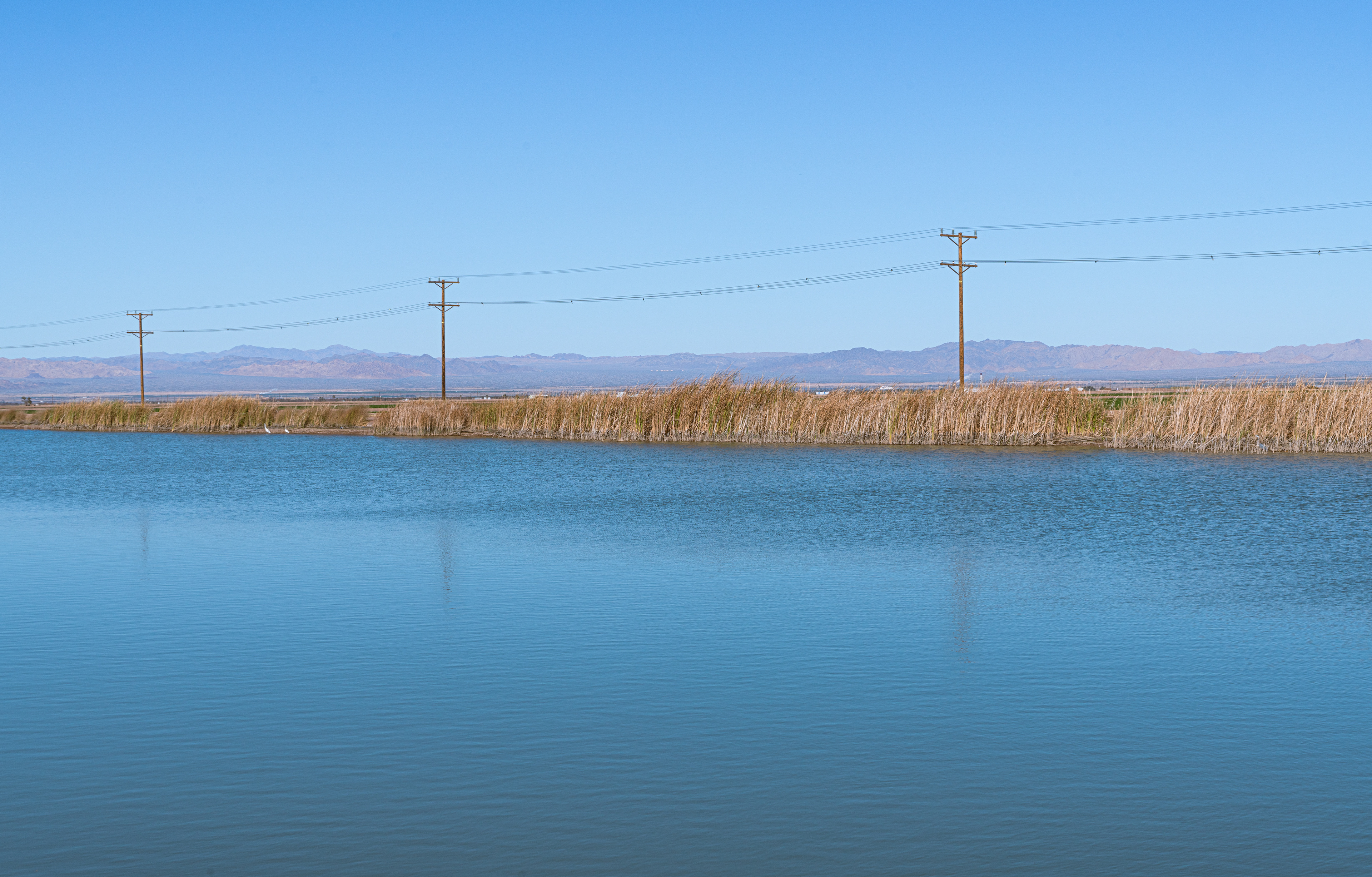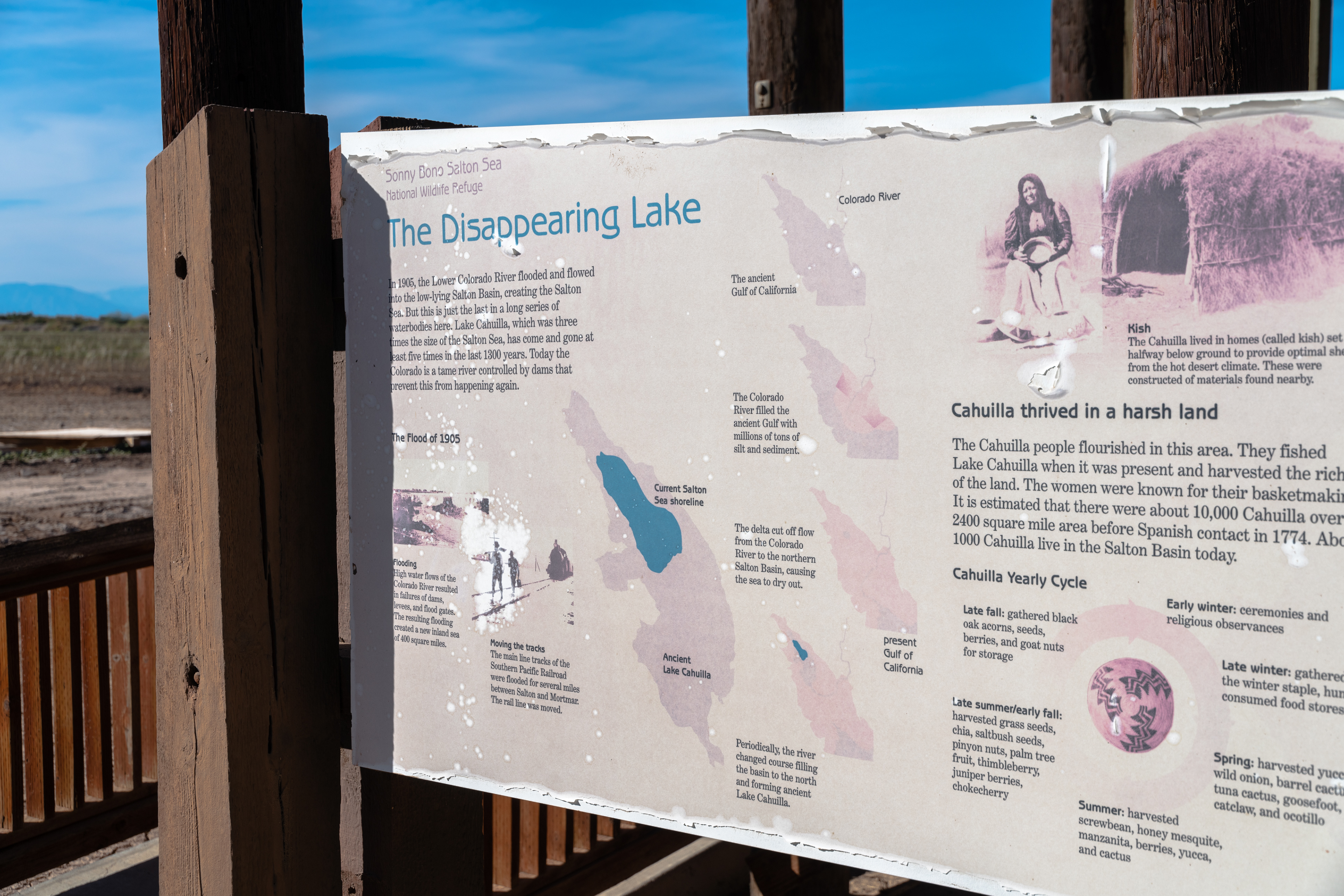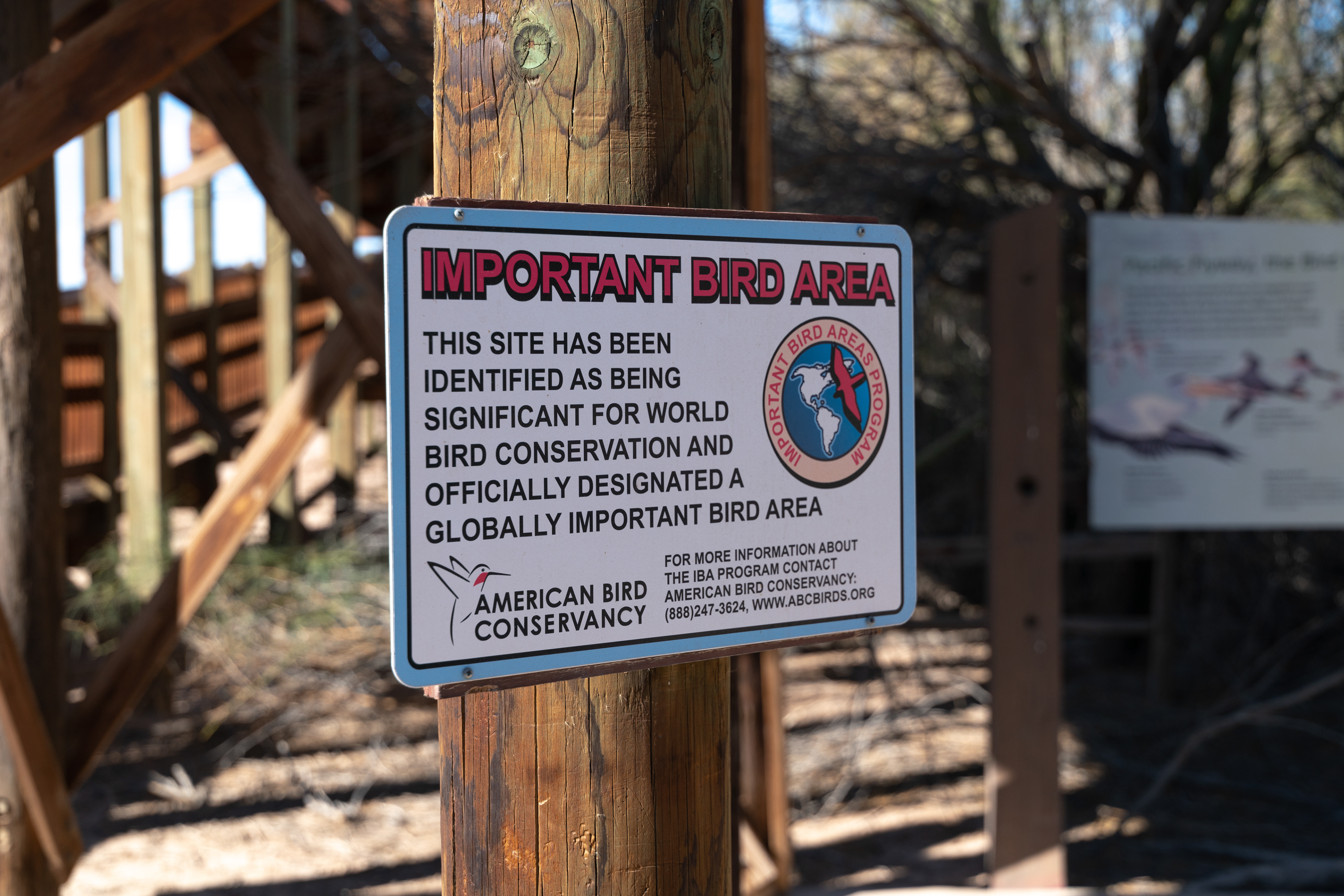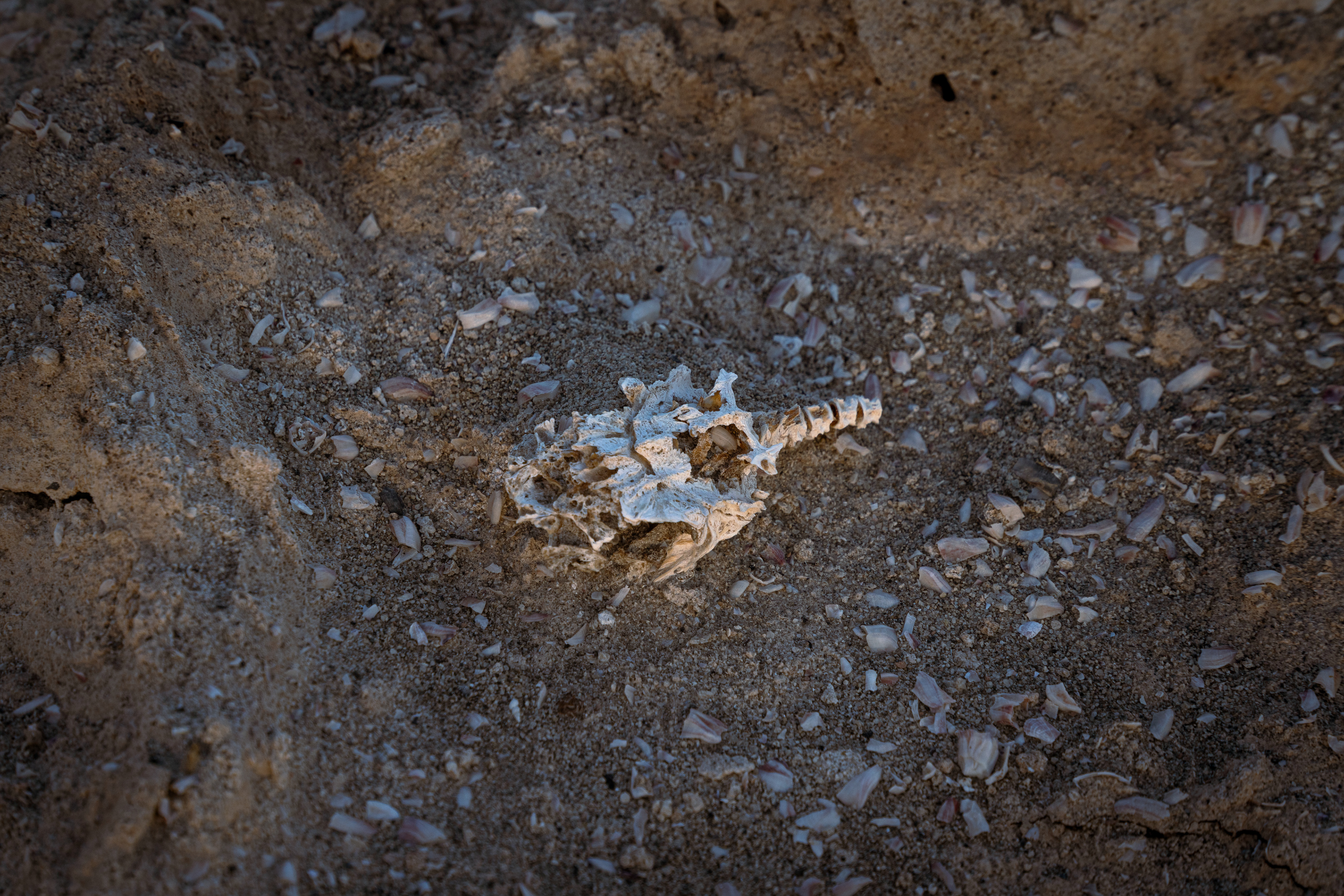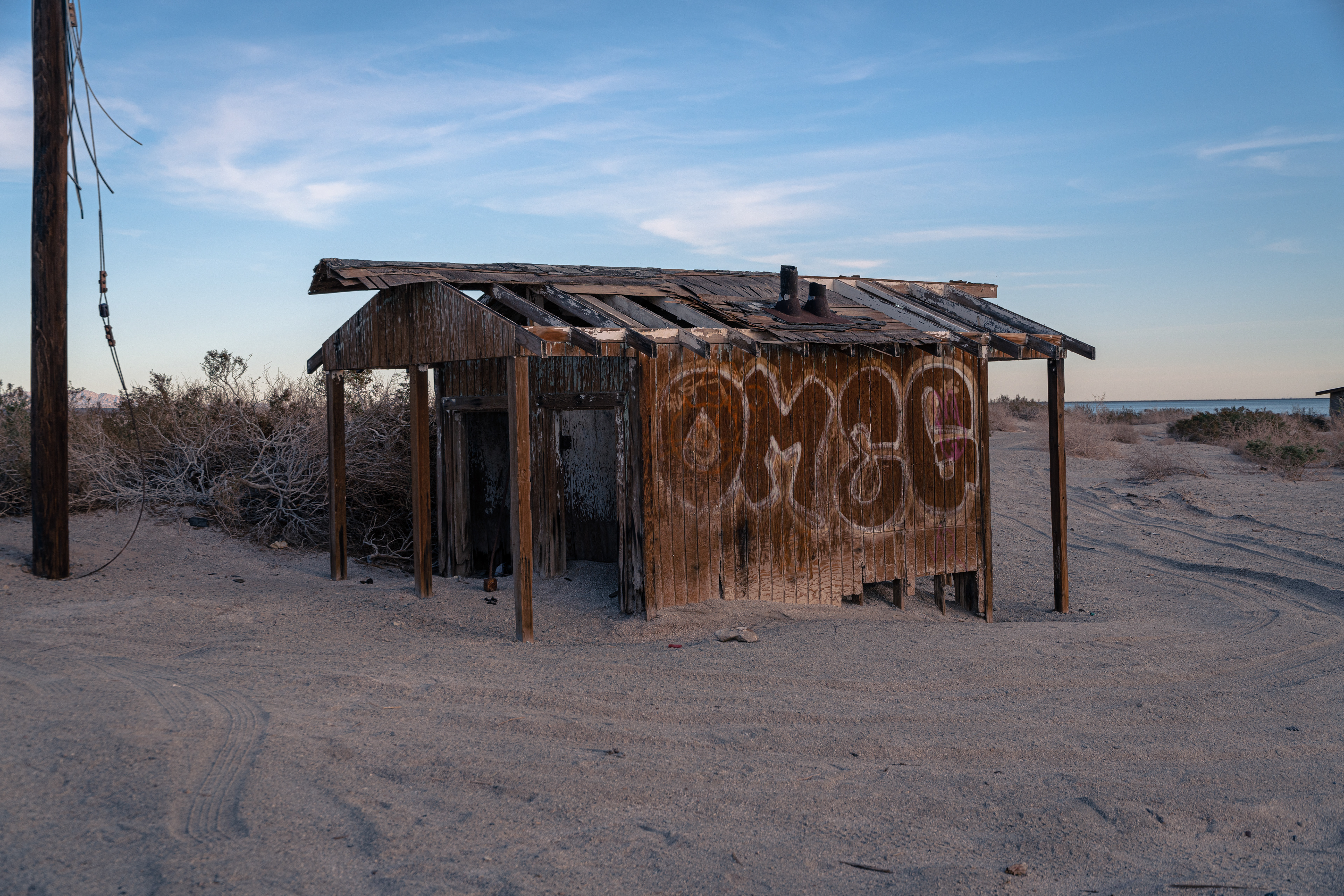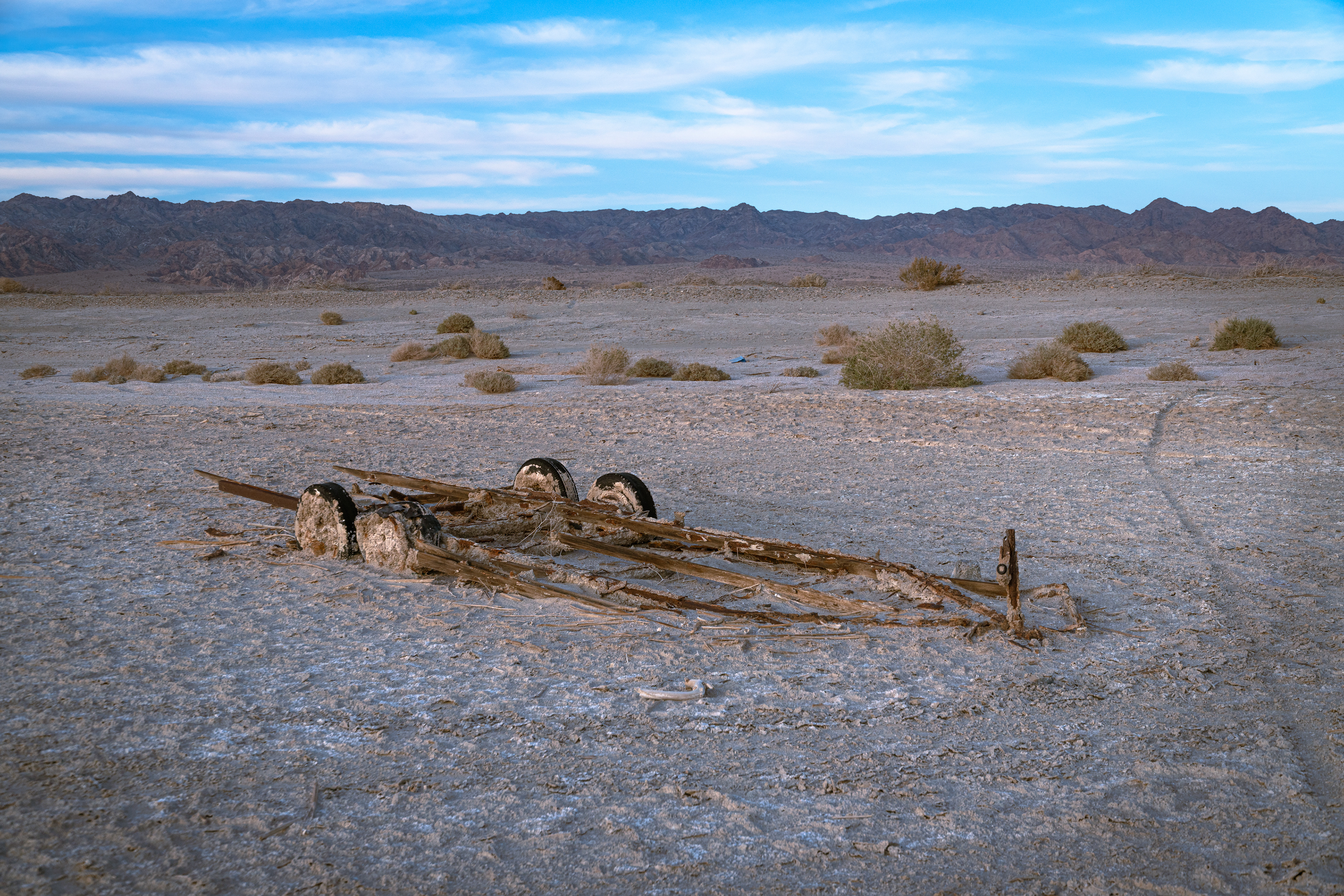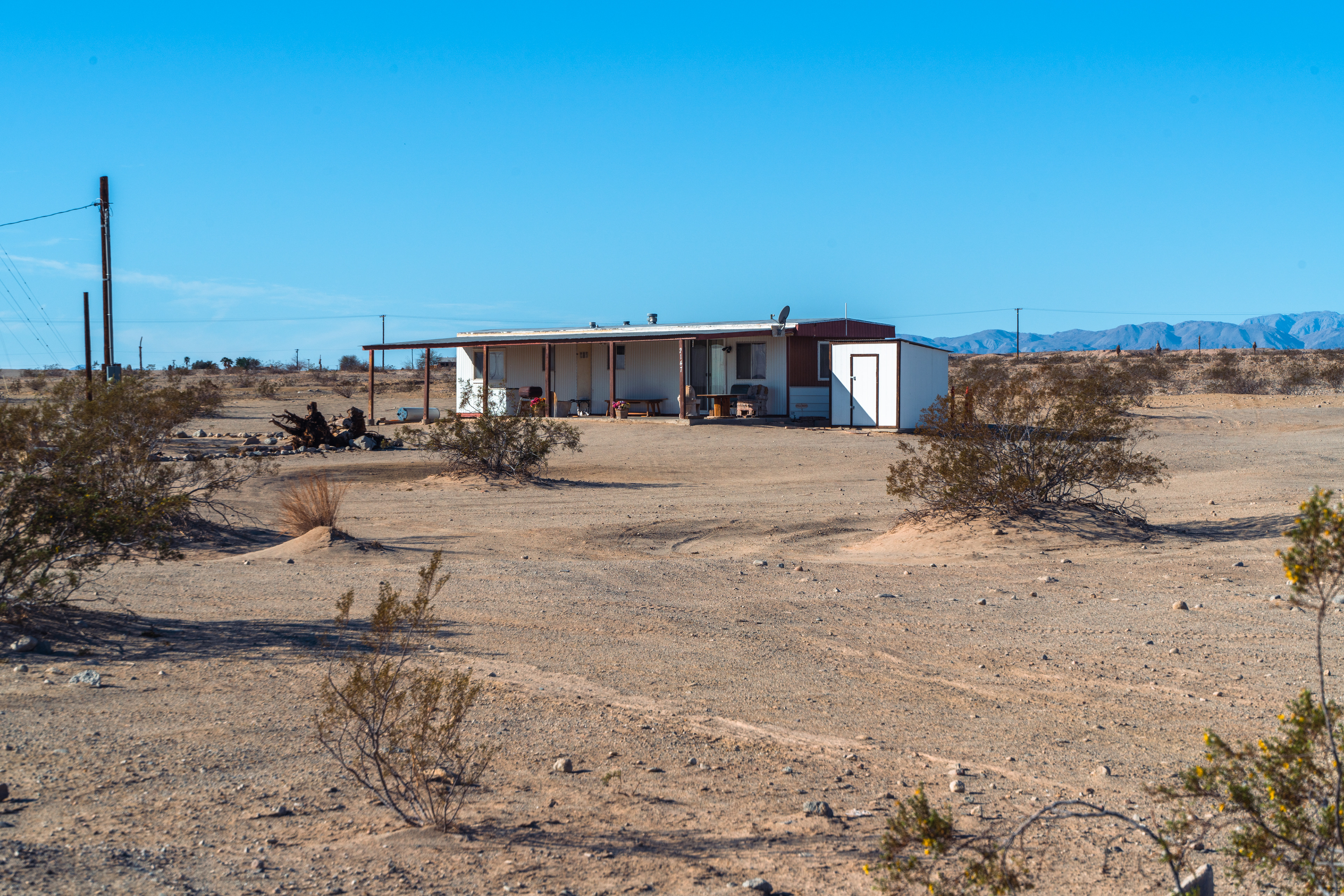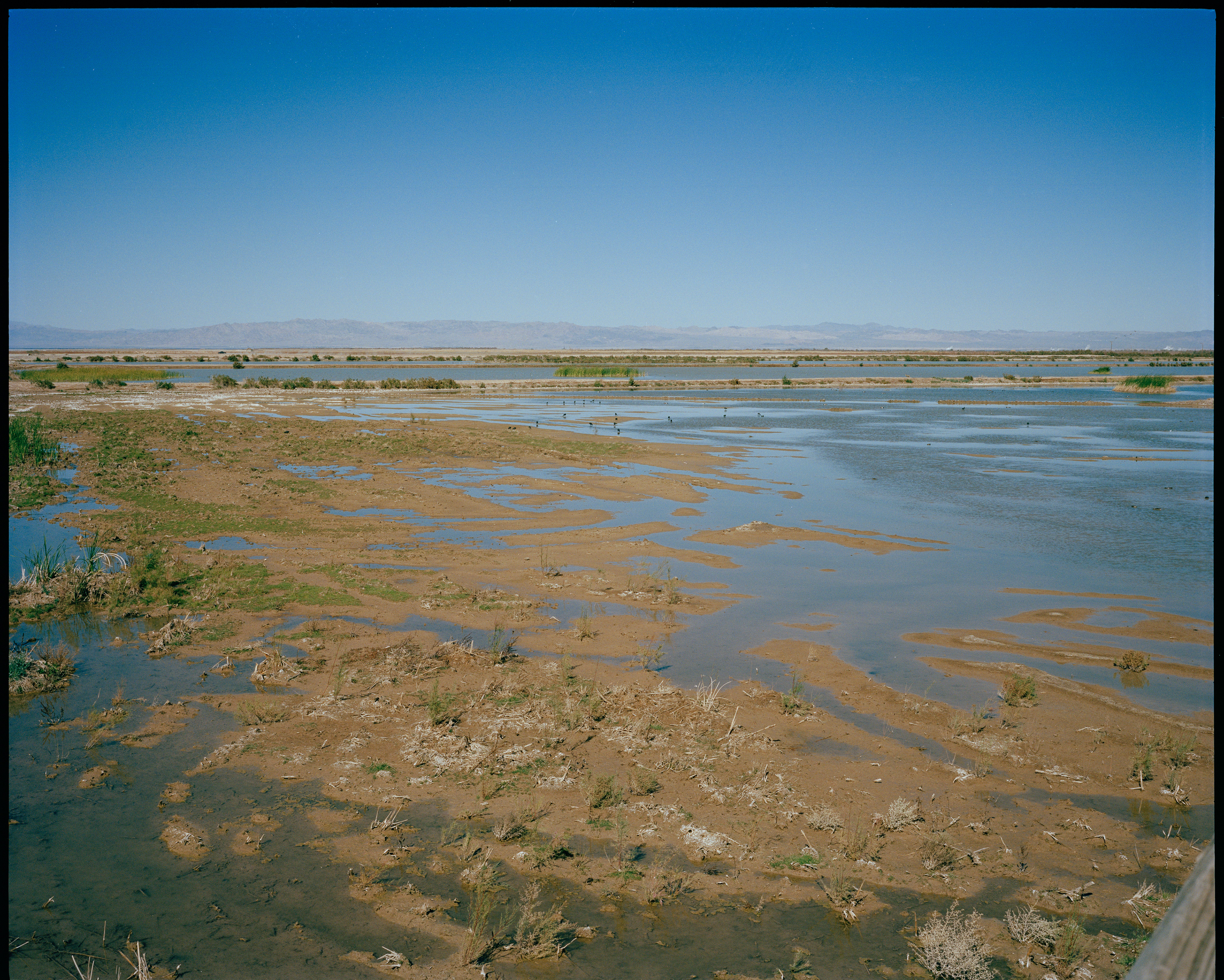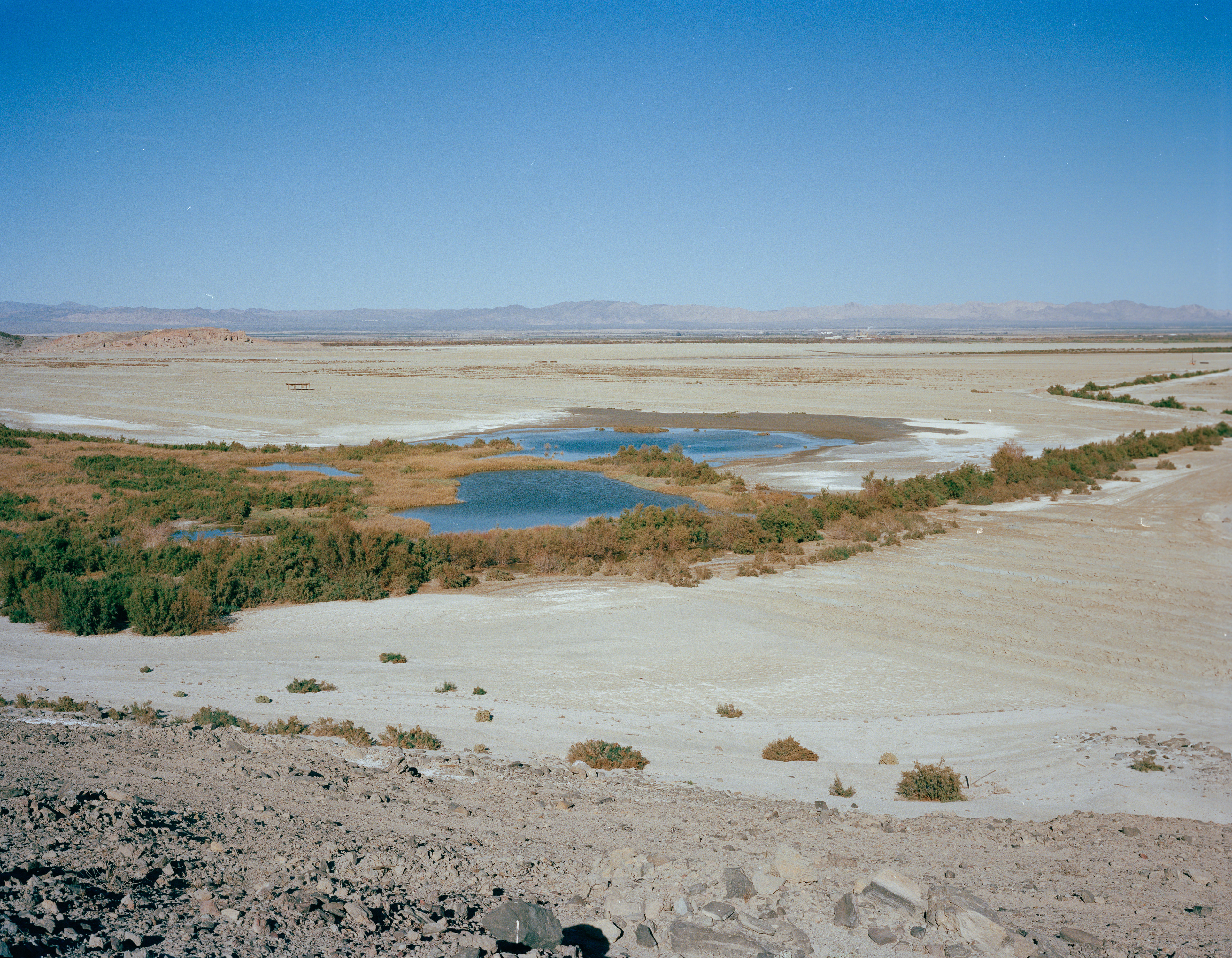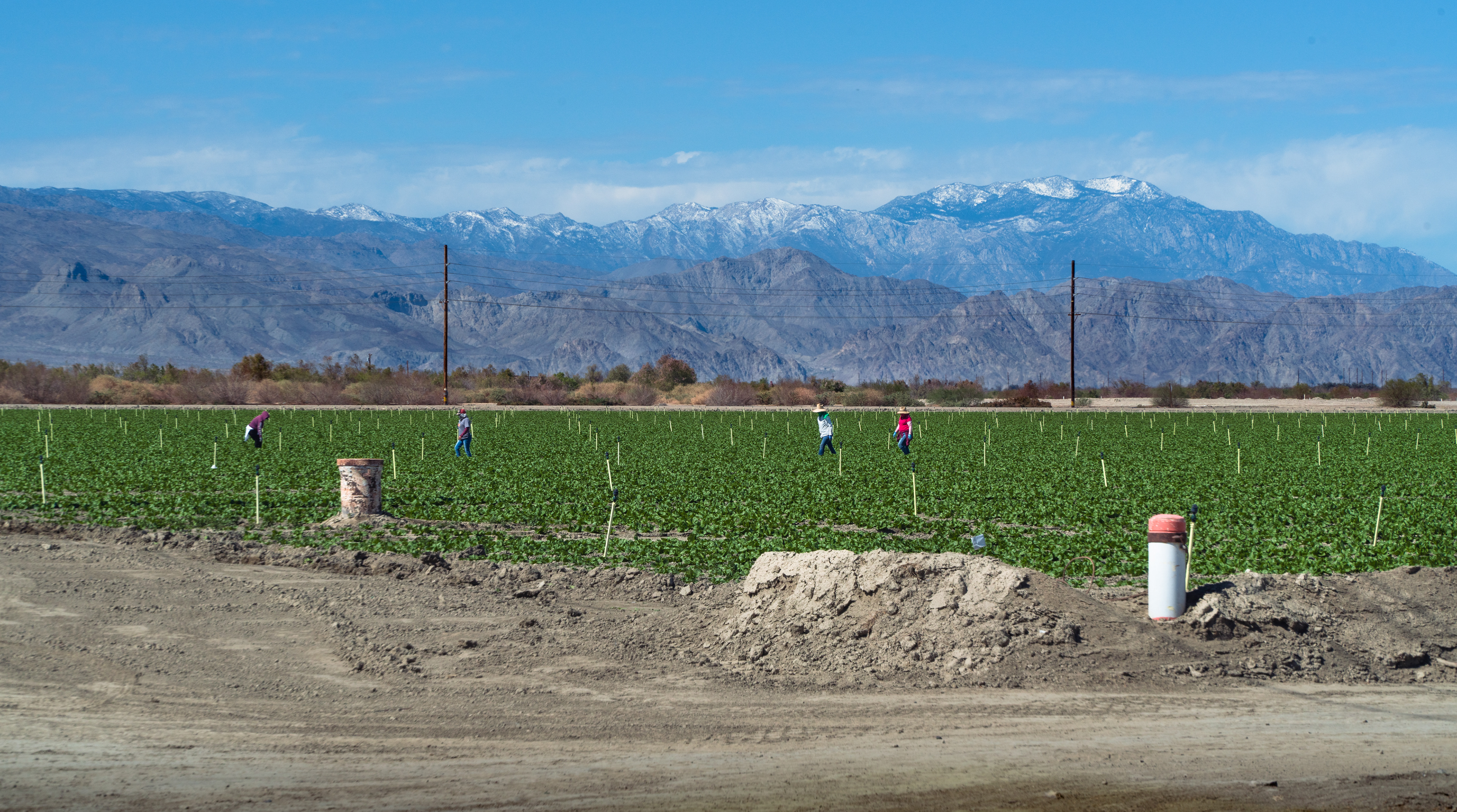Historically known as Lake Cahuilla, an ancient body of water located in Southern California along the border of Mexico — born and refreshed over time from the changing flow patterns of the Colorado River — the Salton Sea in its most proximate form was accidentally created in 1905 when canals engineered to divert the flow of the Colorado river for agriculture use in the Imperial Valley flooded, introducing an abundance of water back into the arid land.
Today, after a period of tourism in the mid-twentieth century followed by a transition to agriculture among the surrounding communities, the sea has changed dramatically. The land’s high salinity, mixed with chemical runoff in conjunction with decades of natural evaporation has left the water concentrated with toxicity. As a result, the land’s ecosystem has shifted dramatically, with birds and fish dying off at catastrophic rates leaving behind a select few species to maintain a new balance.
The surrounding communities, primarily comprised of hispanic and indigenous low-income households find themselves in a tricky situation with few options left to themselves to restore the land. With substantial government funding but incongruent water politics and limited external effort directed to revitalize the land, change is slow but gradual progress is being made to restore some of the preexisting wildlife and the quality of water.
Most recently, however, the Salton Sea has been a topic within the news due to the substantial deposits of Lithium that have been identified beneath the sea. Extraction of the Lithium is believed to be expensive, but possible, and tempting for mining companies who — on behalf of electric vehicle producers — would utilize the lithium for vehicle batteries as transportation shifts toward electric vehicle production. While the mining of the land would undoubtedly destabilize and already fragile ecosystem, the issue is anything but straightforward. Mining would not only ensure tapping into stores that would account for nearly 60% of the global Lithium consumption, but the accompanying drilling process would also allow the expansion of geothermal energy plants, which are already operating in the region. While this resource could be highly beneficial globally, the local implications are not fully understood.
